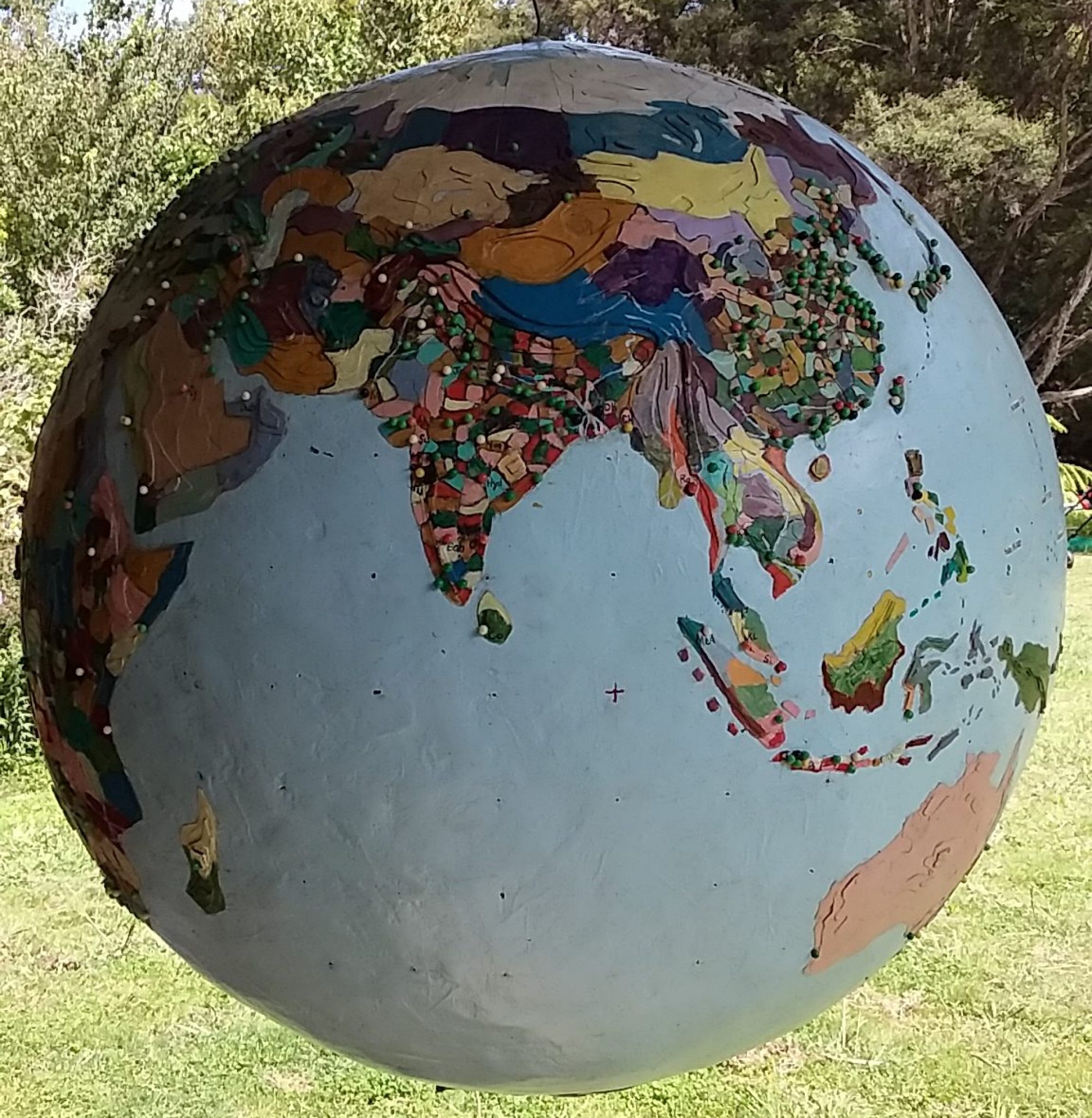The Last Column
I had proposed to write this, my last column for the Wanganui Chronicle, on the millisphere of Shikoku, the smallest, and least populous of Japan’s four major islands. An old friend had recently returned from the 88 temple pilgrimage around the island, but he got called away before I could interview him in depth, his mother was dying.
I was following a trail of populations with negative growth. In 2010 Japan’s population peaked at 128.5 million, it is now around 127 million. In 1990 Shikoku Island had a population of 4.2 million, now it is 3.9 million.
My friend said that in mountainous Shikoku, where hydrangeas grow naturally, it was common to see abandoned homes complete with furniture and ornaments, and elderly farmers, bent double, still working their vegetable gardens. I learned that “natural farmer” Mansanobu Fukuoka, the author of The One-Straw Revolution (1975), was from Shikoku.
Signing off made me reflect on what I’d learned writing columns. Generally they were about “place”, from local (Mosquito Point) to global (Donetsk). In the last two years I have managed to chronicle 66 millispheres and at this rate it will take me another thirty years to write up all one thousand – a millisphere being a discrete region inhabited by roughly one thousandth of the world population – that would make me one hundred when I publish the last one. At 700 words per millisphere that’s a 700,000 word book, almost as many as the 780,000 word King James Authorised Version of the bible.
By definition every millisphere has roughly the same number of inhabitants (now an average of around 7.8 million) but they all have quite different geographies, both physical and human. All millispheres have connections with other millispheres and change is inevitable.
Some millispheres are also states: The Central African Republic is the world’s poorest, Switzerland the wealthiest and Hong Kong has the highest average income. Israel is a millisphere but so is “Palestine” (Israel, Gaza and the West Bank combined). The millisphere is merely a lens to examine human geography and different lenses see different things. New Zealand is a millisphere, but so is “Te Moananui” (New Zealand plus all the other islands of the Pacific).
Some millisphere columns have dwelt on war and the arms industry, and the evidence points to competing empires causing most major conflicts in the world. Religion and nationalism are marshalled to give a conflict legitimacy but it’s usually about a few grabbing the money and resources. Last century’s Cold War between America and the Soviet Union is still playing itself out, for no other reason than profits and “jobs, jobs, jobs,” to quote Donald Trump. The conclusion that the world would be a better place without “the great powers” is a hard one to avoid.
Religion is a dangerous topic but also a defining component of the geography of a millisphere – along with its rocks, plants and animals. I’ve been taken to the Press Council for “gratuitous references” to Jews, and found not guilty. I try be to tolerant but seeing a Russian Orthodox Christian minister in full beard and Byzantine robes, on a Vice News video, sprinkling holy water on a Ukrainian missile launcher, makes me want to say something rude, and that goes for Muslims shouting “Allahu akbar” as they pull the trigger.
I’m not a Buddhist but I want to write up Bodhgaya in India where the Buddha had his moment of realisation. I’ve just met a dancer from Moscow and I want to write up relevant millispheres for the coming football World Cup in Russia. I’ve started researching Sonora in Mexico in preparation for the trial in New York of Chapo Guzman and I still want to do Shanghai, Kyoto, Laos, Alexandria, Mosul and the millispheres that make up the Netherlands (17 million).
Tempting as it is to travel again, my garden, friends, family and a small black-and-white dog are keeping me close to home. It will be good to take a break from writing – I’ve got a couple of building projects on – but I’ve set up a blog at millisphere.blogtown.co.nz and I will continue “mapping millispheres,” some that I’ve seen, some not.
